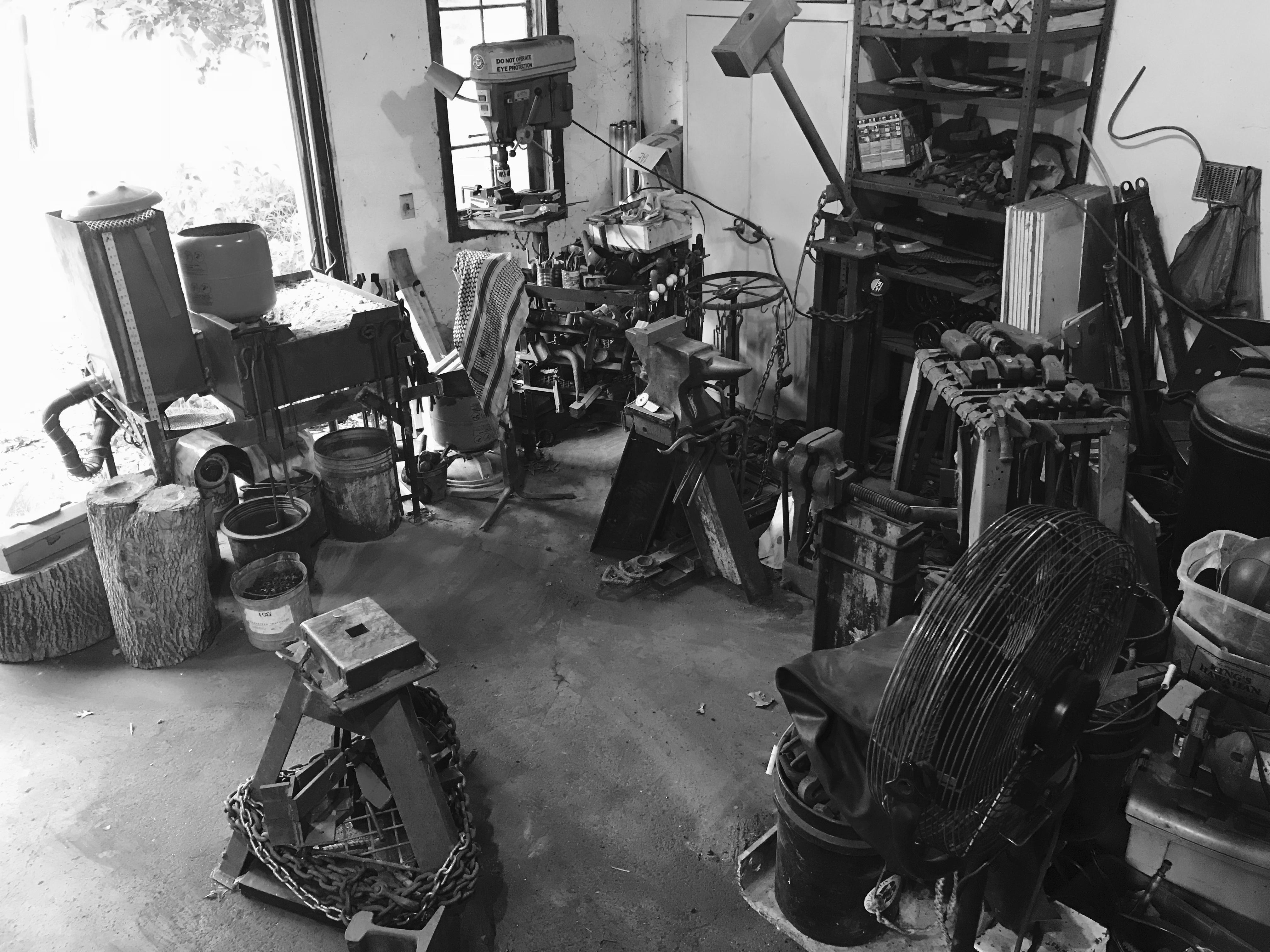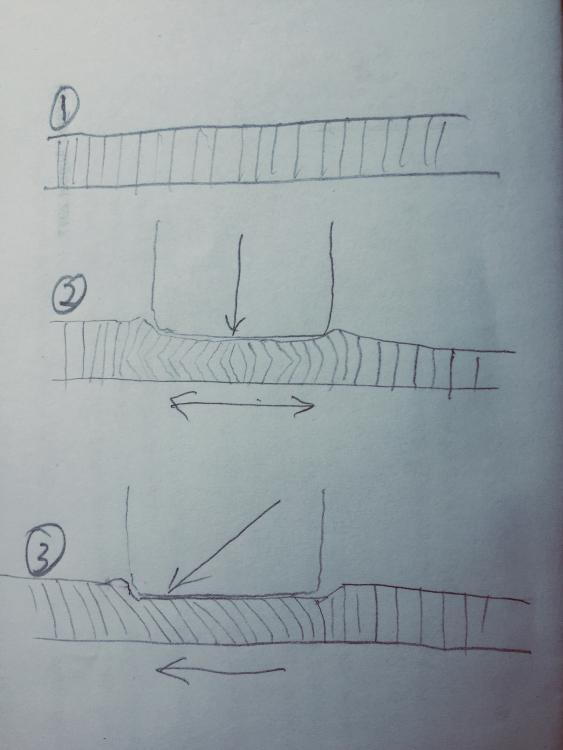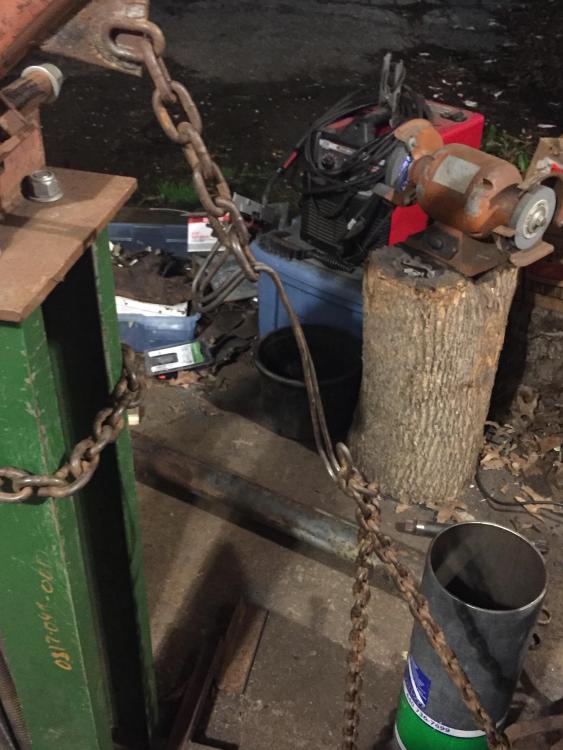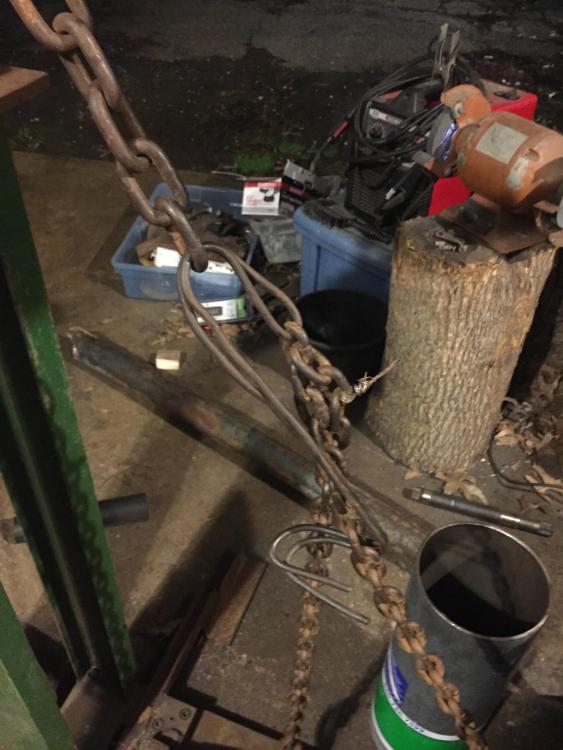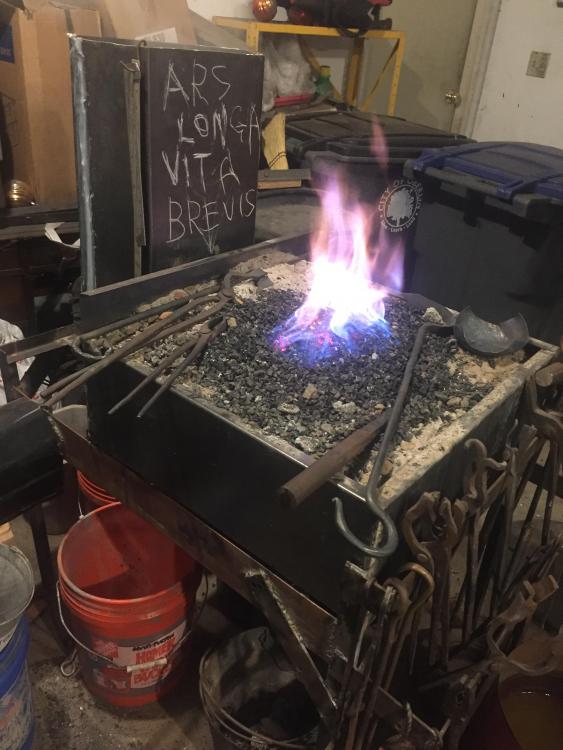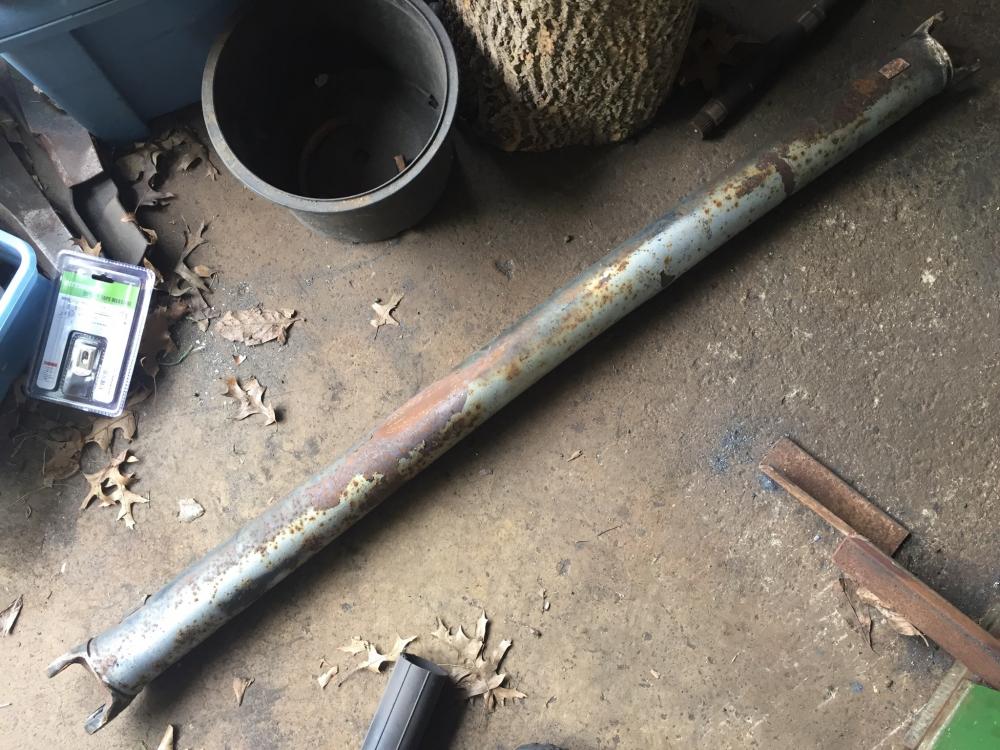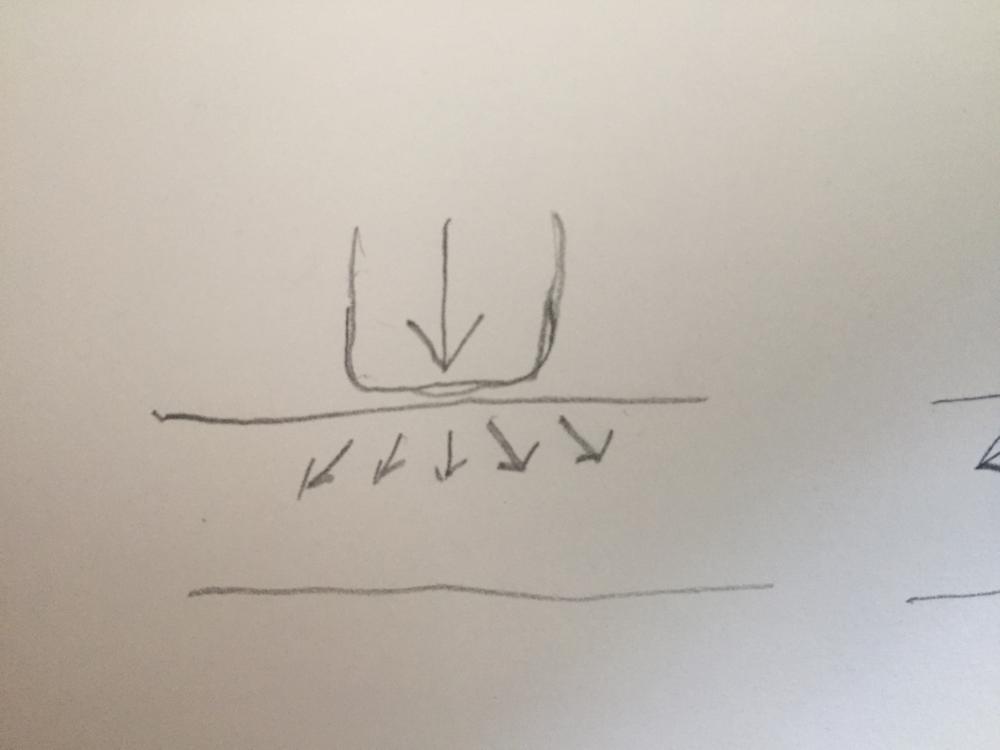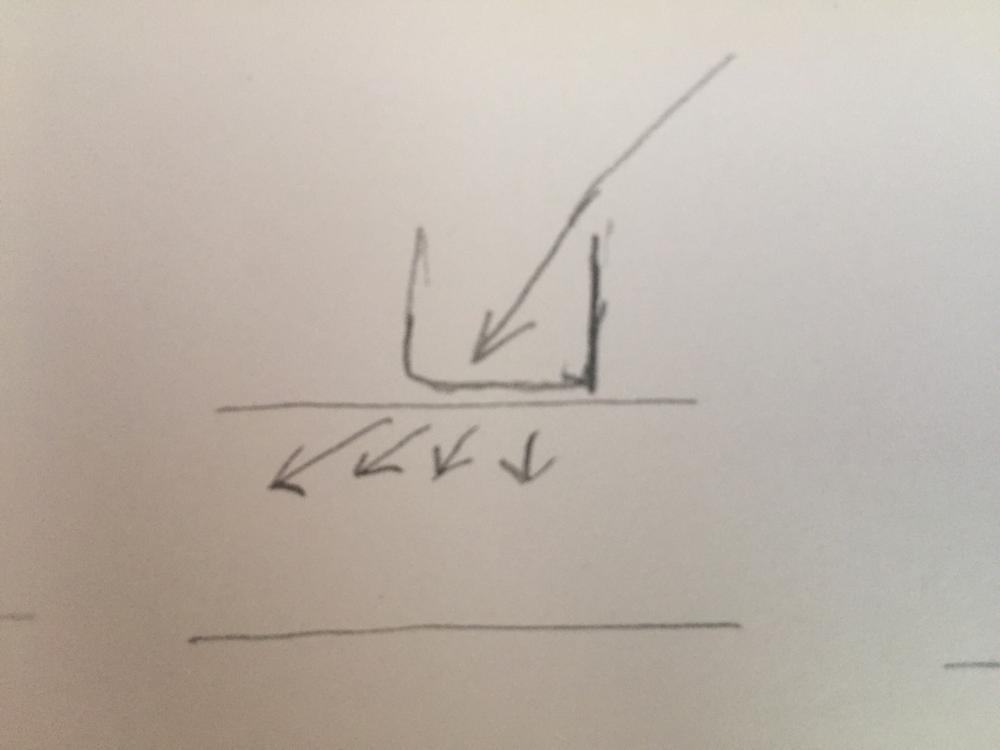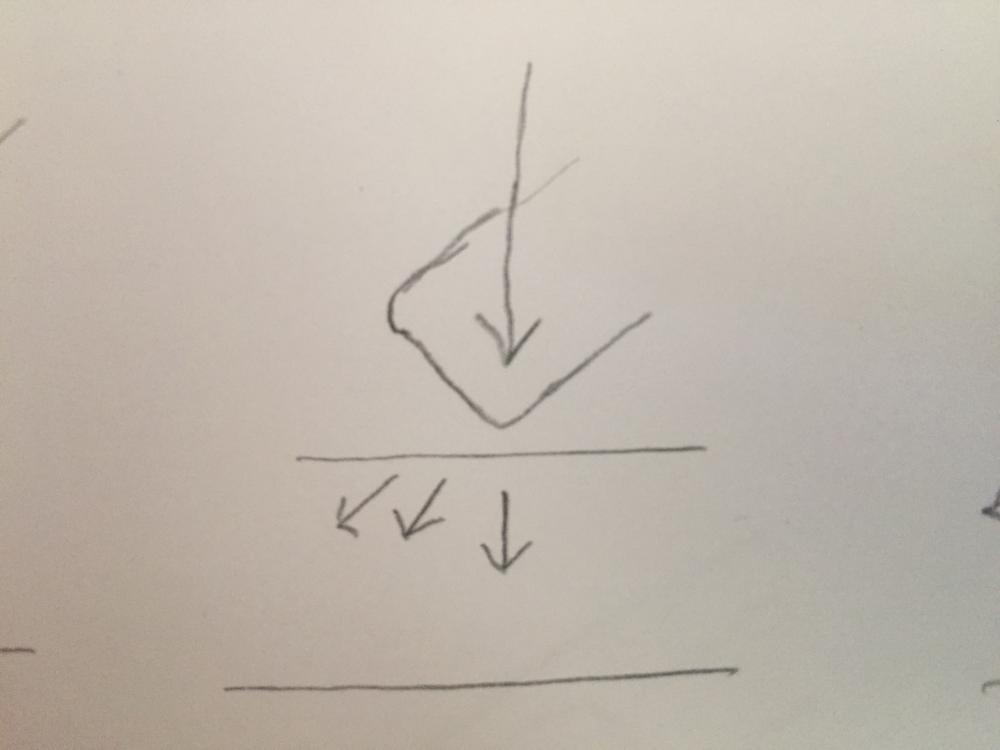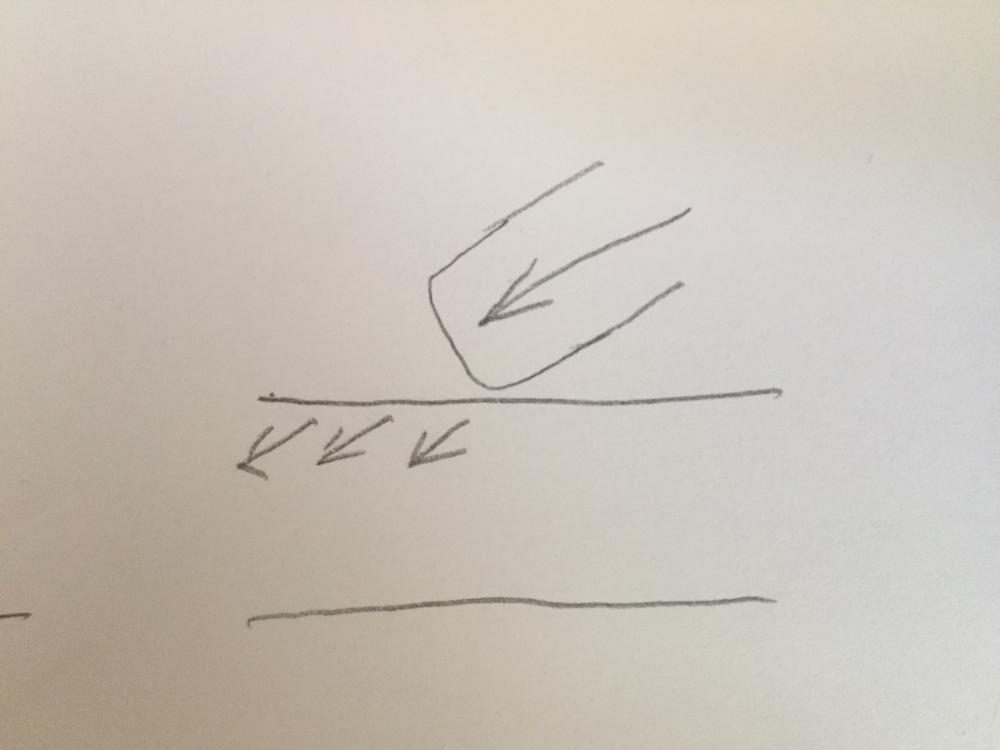-
Posts
19,356 -
Joined
-
Last visited
Content Type
Profiles
Forums
Articles
Gallery
Downloads
Events
Everything posted by JHCC
-
Not sure what your plans are for the keg, but please read the threads about the JABOD forges before you proceed further.
-
Dangerous curves ahead! That's beautiful, Steve. Thanks for showing us.
-
Looks decent, Hans; looking forward to seeing more photos. 150 lbs is a good size, too. Do those holes (pritchel & hardy) go all the way through?
-
Well, I’m going to give it a shot. Imagine for a moment that the workpiece is made up of many flexible rods standing on end, as in (1) in the drawing below. If you hit straight down as in (2), those rods will buckle outwards from the center, pushing the material out equally on all sides. If you strike an angled blow (hammer face parallel to the workpiece) as in (3), those rods will all get deformed in the same direction. This pushes the material out in the direction of the hammer blow. Make sense?
-
Inter-Library Loan. If your library doesn’t have a book and another library does and is willing to loan it out, they will send it to your library. You check it out and return it there.
-

What did you do in the shop today?
JHCC replied to Mark Ling's topic in Blacksmithing, General Discussion
Once again, I didn’t get a chance to fire up the forge this evening. However, I did get into the shop and made something for the linkage on the treadle hammer. I’ve been playing around with this idea in my head for a while, so I’m pleased that it seems to work fairly well. As noted before, unhooking the chain that connects the arm to the treadle lets the hammer swing up and out of the way, giving me the clearance needed for hand hammering. Pulling the head down and re-connecting the chain lets me switch back to treadle hammering. Being able to switch back and forth easily is one of the greatest things about this rig, so I wanted to make the process a little bit easier. The solution is this adjustable linkage, shown here in the unlatched position: And here it is closed: So basically, all you have to do is pull down the head, pull down the lever to shorten the distance between the ends of the two chains, and hook the ends of the lever to keep the thing together. To lengthen the linkage, reverse. The lever is made from about three feet of garage door torsion spring, straightened, normalized, and bent cold. If this proof-of-concept works well, I’ll forge a nicer looking one from another section (although I think it was either Frosty or ThomasPowers who said there’s nothing so permanent as a temporary solution). -
Sounds pretty hollow when tapped, but I’ll doublecheck. Thanks for the tip.
-

Has anyone here actually broken an anvil?
JHCC replied to JHCC's topic in Repairing and Modification to Anvils
Another example: archaeologists in Britain observed that they had a lot of Roman potsherds and a lot of early medieval and later potsherds and therefore assumed for quite some time that the Saxons had little to no pottery. In fact, the Saxons had quite a lot of pottery, but it was of such low quality that it simply didn't survive. -
And that's how you end up in "Making a tool to make a tool to make a ... what was I making?" mode.
-

Has anyone here actually broken an anvil?
JHCC replied to JHCC's topic in Repairing and Modification to Anvils
Not quite; more like "If the steering gear and brakes are faulty, the car will get in a wreck before it has a chance to get old." In other words, if there is a flaw in the weld or some other weak spot, hard use will find it out and the anvil will break. Conversely, if the anvil isn't broken, either (A) there is no such hidden flaw or (B) there is a hidden flaw, but the anvil hasn't been worked hard enough to cause it to fail. To put it another way, it's like the old canard about how everything was so much better made in the past, whereas in reality, the things that weren't well made simply didn't survive. -
No. Cement gains strength from absorbing water and forming hydrate compounds. Above a certain temperature, those hydrates lose their water content, which then flashes to steam, sometimes explosively. I see that this was your first post on IFI. Welcome, but please READ THIS FIRST!!!
-
We see a lot of photos of anvils with the horn or the heel broken off, but I don't recall seeing any that show a fresh break. In other words, these all appear to be older wrought iron anvils that experienced a failure of one or more forge welds, rather than (A) older wrought iron anvils that have not broken, (B) cast iron/steel hybrid anvils (Fisher, Vulcan, etc), or (C) newer cast steel anvils. It seems likely, therefore, that (for the most part) any anvil that was so flawed that it was going to break, already has broken. So, has anyone here actually broken any anvil other than a cast iron ASO?
-
Welcome aboard, Collin. If you haven't yet, please READ THIS FIRST!!! In particular, there have been a number of discussions about exploring "old fashioned apprenticeships"; the TL;DR version is "Don't bother; they don't exist." With a wife and two kids, the last thing you want to do is commit yourself to long hours and no pay.
-
If only I'd learned this sooner, how many fewer punctures I might have had on my thumbs!
-
-
So, there's some kind of mechanism inside the cylinder that compresses when you step on the treadle, and then pushes the arm back up when the treadle is released? The top picture kind of looks like it's a spring, but is there a pneumatic cylinder as well?
-
Let's call it "weathered" and charge more for it.
-
They’re hollow?
-
-
Well, that was 35 years ago, and I may be fuzzy on the details. The proportions are about the same, but I think Fred’s was a cross peen.
-
In other words, the force exerted by the hammer blow follows the rule for pressure: mass divided by area. A 2 lb hammer with a 1" square face and a 2 lb. hammer with a 4" square face will both hit with the same total force, but the hammer with the smaller face will have that impact concentrated on an area 1/4 the size of the larger.
-
It's a thing-holding thing.
-
That's "Authority Having Jurisdiction", FYI.
-

What did you do in the shop today?
JHCC replied to Mark Ling's topic in Blacksmithing, General Discussion
I've started a new discussion on Hammer Shape and Its Effect on Precision; let's continue this discussion there. -
The following discussion began as comments on photos I posted about a new, rather slender rounding hammer I'd just finished. It seems to me that if we analyze this question, it really comes down to two important angles: the angle of the face of the hammer and the angle of the path of the hammer strike, both measured relative to the workpiece. For example, in the first these two drawings, the face of the hammer is parallel to the workpiece, but the path is different. Here, the hammer is angled, but the paths are again different. With each of these, the metal will generally move in the direction of the hammer blow, with the angle of the hammer face having a secondary effect on its flow. As far as precision goes, a longer, thinner hammer both will have a smaller striking area and will be easier to aim. However, unless the path of the hammer blow is precisely aligned with the long axis of the head, there will be more torque on the handle. In other words, the mass of the hammer head and the force of the blow will combine to form a lever with the impact point as the fulcrum. Whereas with a shorter, fatter hammer (like a farrier’s rounding hammer), the center of mass is going to be closer to the point of impact, creating a shorter lever with less torque. In sum, the longer, narrower hammer would theoretically be better for delivering at targeted blows at precise angles, so long as the path of the hammer head is in line with its long axis. The shorter, thicker hammer can strike along a variety of paths and would be more forgiving of hitting off-center or off-axis. Thoughts?
